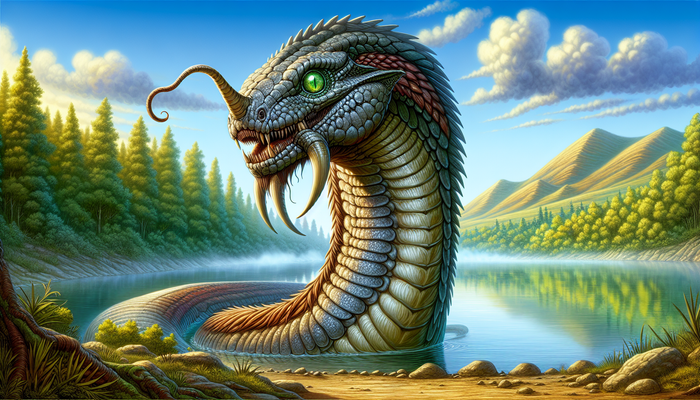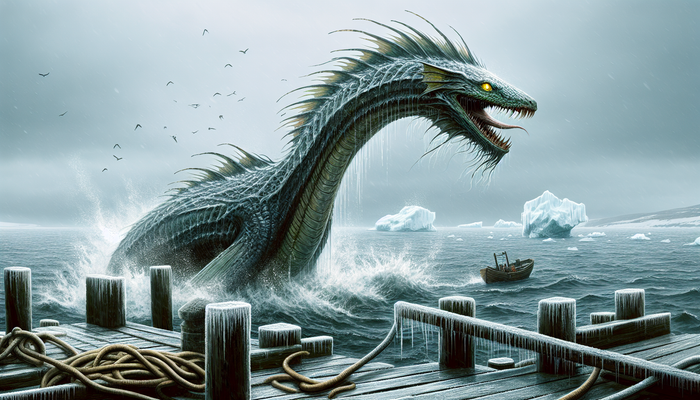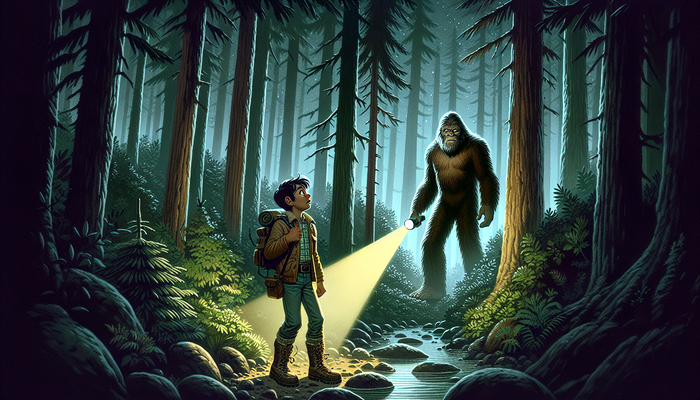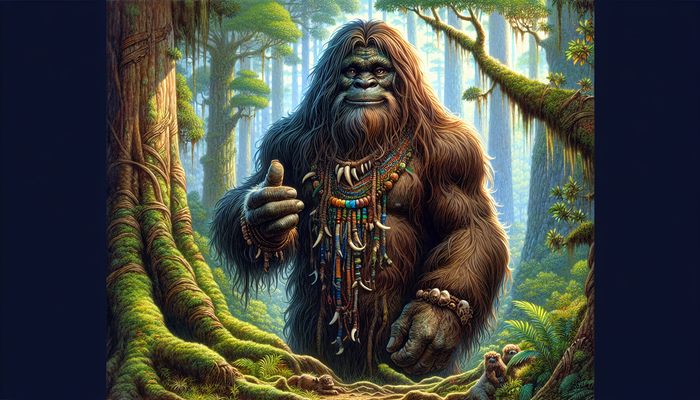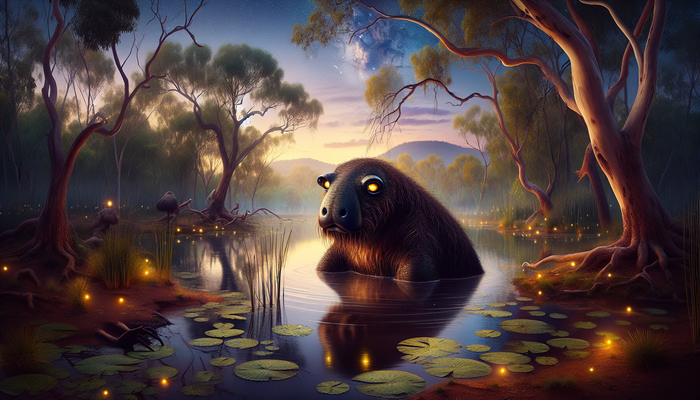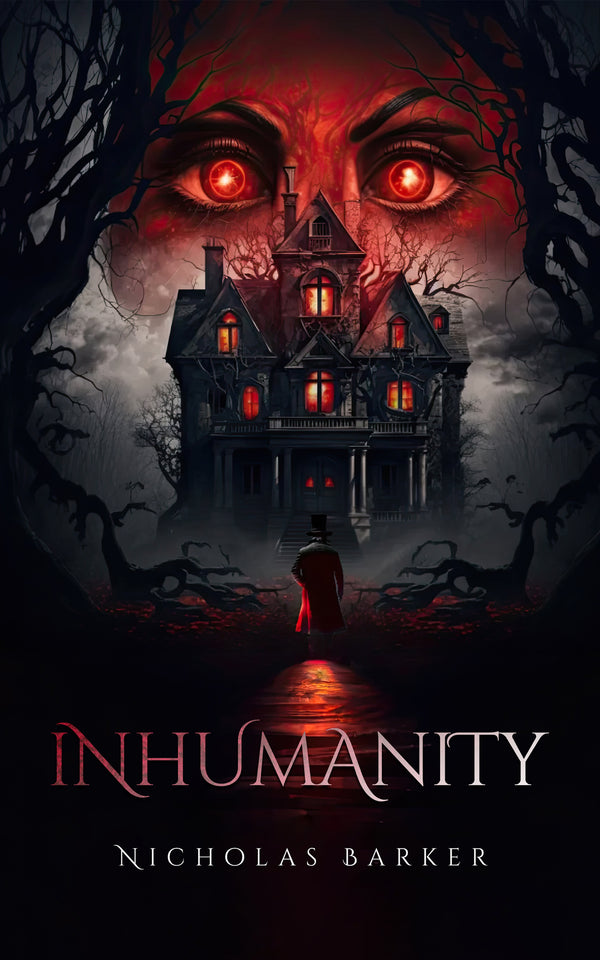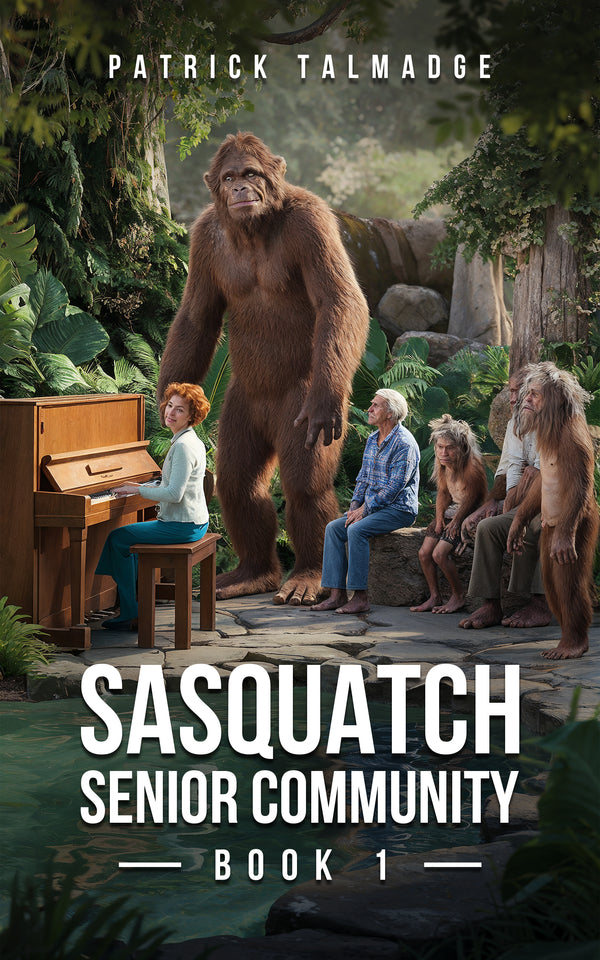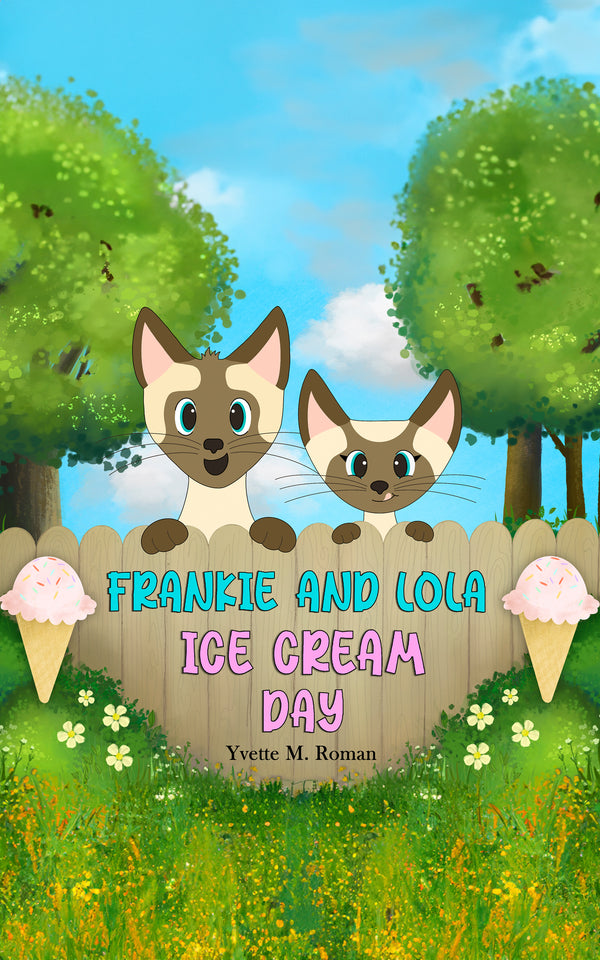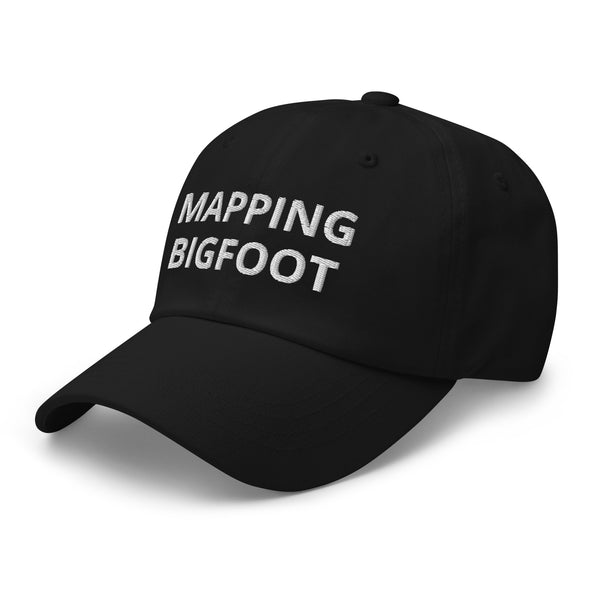The Surgeon’s Photograph: Loch Ness - The Truth Behind the Iconic Image

By Anthony Romano, Cryptozoologist
The Origins of a Legend
The legend of the Loch Ness Monster didn't begin with the famous photograph. In fact, tales of a mysterious creature inhabiting the deep, dark waters of Loch Ness stretch back centuries. The first recorded sighting dates to 565 AD, when Irish missionary Saint Columba allegedly encountered a beast in the River Ness. According to his biographer Adomnán, Columba commanded the creature to "go back" when it threatened a swimmer, and miraculously, it obeyed.
Fast forward to the 20th century, and the modern Nessie phenomenon was born. In 1933, a new road was completed along the northern shore of Loch Ness, offering unprecedented access to the loch. This development set the stage for a series of sightings that would catapult the Loch Ness Monster into the global spotlight.
The watershed moment came when George Spicer and his wife reported seeing "a most extraordinary form of animal" cross the road in front of their car. They described it as having a large body, about 25 feet long, with a long, wavy, narrow neck. This sighting, published in the Inverness Courier on August 4, 1933, ignited public interest and sparked a media frenzy.
Hot on the heels of the Spicer sighting, Hugh Gray captured what is considered the first photograph of the Loch Ness Monster in November 1933. Though blurry and indistinct, the image showed what appeared to be a large creature with a long neck thrashing about in the water. This photograph, while far from conclusive, added fuel to the growing Nessie fever.
Enter the Surgeon's Photograph
It was against this backdrop of mounting excitement and speculation that the most famous image in the Loch Ness Monster saga emerged. On April 21, 1934, the Daily Mail published a photograph that would define the public's perception of Nessie for generations to come. The image showed what appeared to be the head and neck of a plesiosaur-like creature rising from the rippling surface of the loch.
The photograph was attributed to Robert Kenneth Wilson, a London gynecologist, who claimed to have taken it while visiting the area. Wilson's reluctance to have his name associated with the image led to its nickname, "the Surgeon's Photograph." His status as a respected medical professional lent credibility to the image, and its publication in a major newspaper ensured its widespread dissemination.
The impact of the Surgeon's Photograph was immediate and profound. It seemed to provide tangible evidence of the monster's existence, confirming the descriptions given by eyewitnesses like the Spicers. The image perfectly matched the public's imagination of what a surviving plesiosaur might look like, with its long, serpentine neck and small head.
For decades, the Surgeon's Photograph was held up as the strongest piece of evidence for the existence of the Loch Ness Monster. It withstood scrutiny from various experts and became the cornerstone of Nessie lore. The image was reproduced countless times, appearing in books, documentaries, and news articles about the creature. It shaped the way artists depicted Nessie and influenced how people interpreted subsequent sightings.
The photograph's influence extended far beyond Loch Ness. It helped to establish cryptozoology as a field of study and inspired searches for similar creatures in lakes and oceans around the world. The image became a cultural touchstone, referenced in everything from serious scientific debates to popular entertainment.
Unraveling the Mystery
For 60 years, the Surgeon's Photograph remained the most compelling piece of evidence for Nessie's existence. However, as with many things that seem too good to be true, cracks began to appear in its facade. Skeptics had long questioned the authenticity of the image, but it wasn't until the 1990s that the full truth came to light.
In 1994, Christian Spurling, then 93 years old and near the end of his life, made a startling confession. He revealed that the famous photograph was, in fact, an elaborate hoax. Spurling's stepfather was none other than Marmaduke Wetherell, a big-game hunter who had been hired by the Daily Mail in 1933 to find the Loch Ness Monster.
Wetherell's expedition had initially seemed successful when he discovered what appeared to be footprints of a large, unknown creature on the shores of Loch Ness. However, when researchers from the Natural History Museum examined the tracks, they determined they had been made with a dried hippo's foot – a common umbrella stand ornament of the time. The revelation was deeply embarrassing for Wetherell and the Daily Mail.
Seeking revenge for this humiliation, Wetherell hatched a plan. He enlisted his son, Ian Wetherell, and his stepson, Christian Spurling, to help create a model of the monster. Spurling, a skilled model maker, constructed a "head and neck" using plastic wood attached to a toy submarine. The contraption was then photographed in a small inlet of Loch Ness, creating the illusion of a much larger creature in the open water.
To lend credibility to the hoax, Wetherell recruited his friend, Maurice Chambers, to approach Dr. Wilson. Wilson agreed to serve as a respectable front man, claiming to have taken the photograph himself. The plan worked brilliantly, fooling experts and the public alike for decades.
The revelation of the hoax sent shockwaves through the cryptozoology community and beyond. It forced a reevaluation of not just the Surgeon's Photograph, but of the entire body of evidence surrounding the Loch Ness Monster. Many who had championed the photograph as proof of Nessie's existence were left red-faced and questioning their beliefs.
However, the exposure of the hoax did not entirely quash belief in the Loch Ness Monster. Many enthusiasts argued that while this particular piece of evidence had been discredited, it did not disprove the existence of a creature in the loch. They pointed to other sightings, sonar readings, and less famous photographs as continuing evidence of Nessie's reality.
The Impact on Loch Ness Tourism and Culture
Despite – or perhaps because of – the controversy surrounding the Surgeon's Photograph, interest in the Loch Ness Monster has remained strong. The legend has become an integral part of Scottish culture and a major driver of tourism in the Highlands.
Loch Ness and its mysterious inhabitant draw hundreds of thousands of visitors each year. The monster is estimated to bring in over £40 million annually to the local economy. Gift shops in the area are filled with Nessie-themed souvenirs, from plush toys to t-shirts featuring the iconic silhouette from the Surgeon's Photograph.
The legend has also inspired numerous books, documentaries, and films. Each new piece of potential evidence or theory about Nessie's identity sparks fresh media coverage and public interest. The Loch Ness Centre and Exhibition in Drumnadrochit serves as a hub for monster enthusiasts, presenting the history of the legend and the various attempts to find evidence of the creature.
Even in the age of smartphones and satellite imagery, new sightings of the Loch Ness Monster continue to be reported. The Official Loch Ness Monster Sightings Register, maintained by Gary Campbell, has recorded over 1,000 sightings, including several in recent years. These modern encounters often involve sonar readings or video footage, but they still capture the public imagination in much the same way as the Surgeon's Photograph did in 1934.
Scientific Investigations and Modern Theories
The enduring fascination with the Loch Ness Monster has prompted numerous scientific investigations over the years. These studies have employed increasingly sophisticated technology in an attempt to solve the mystery once and for all.
One of the most comprehensive searches was Operation Deepscan in 1987. This project used a fleet of 24 boats equipped with echosounder equipment to sweep the loch systematically. While the operation did detect some unexplained underwater contacts, it failed to provide conclusive evidence of a large unknown animal in Loch Ness.
More recently, in 2018, an international team of researchers conducted a comprehensive DNA survey of Loch Ness. Led by Professor Neil Gemmell of the University of Otago, the study analyzed water samples from various depths and locations around the loch. The team was looking for DNA traces that might indicate the presence of unusual species.
The results of the DNA study were intriguing. While the researchers found no evidence of DNA from extinct reptiles or large unknown animals, they did discover a surprisingly high amount of eel DNA. This led to speculation that what people have been seeing in Loch Ness might be exceptionally large eels.
The giant eel theory is not new, but the DNA evidence has given it fresh credibility. European eels are known to grow to impressive sizes, and in the murky waters of Loch Ness, a large eel could potentially be mistaken for a much larger creature, especially when seen briefly or partially.
Other scientific explanations for Nessie sightings have included misidentifications of known animals such as otters or seals, optical illusions caused by waves or floating logs, and even the effects of seismic activity on the loch's surface. Some researchers have suggested that the monster reports might be explained by occasional visitors to the loch, such as wayward seals or sturgeon, rather than a permanent population of unknown creatures.
The Psychology of Belief
The Loch Ness Monster phenomenon raises fascinating questions about the psychology of belief and the human propensity for seeing patterns and meaning in ambiguous stimuli. Even in the face of scientific skepticism and the debunking of key pieces of evidence like the Surgeon's Photograph, many people continue to believe in the possibility of a monster in Loch Ness.
This persistence of belief can be partly explained by the concept of confirmation bias. People tend to seek out and remember information that confirms their existing beliefs while dismissing or forgetting contradictory evidence. For Nessie enthusiasts, each new sighting or sonar blip can reinforce their belief, while failed expeditions or scientific explanations are often downplayed or ignored.
The power of suggestion also plays a role. Once the idea of a monster in Loch Ness entered the public consciousness, people visiting the loch became primed to interpret any unusual sight or sound as potential evidence of the creature. This can lead to honest misidentifications, where ordinary phenomena are perceived as extraordinary due to the observer's expectations.
Moreover, the Loch Ness Monster has become more than just a potential cryptid; it's a cultural icon and a symbol of mystery in an increasingly explained world. For many, believing in Nessie represents a desire to preserve a sense of wonder and the possibility of the unknown in our modern, scientific age.
The role of the media in perpetuating the Nessie myth cannot be overstated. Each new sighting or theory generates headlines, keeping the story alive and introducing it to new generations. The monster has become a valuable commodity, not just for local tourism but for media outlets always hungry for captivating stories.
Legacy of the Surgeon's Photograph
Despite its exposure as a hoax, the Surgeon's Photograph continues to hold a unique place in the Loch Ness Monster story. It remains the most recognizable image associated with Nessie, still used in media coverage and merchandise related to the legend.
The photograph's enduring influence speaks to the power of imagery in shaping public perception. Even those who know it to be fake often can't help but think of that iconic silhouette when imagining the Loch Ness Monster. It has become a visual shorthand for the entire concept of lake monsters and unknown aquatic creatures.
The story of the Surgeon's Photograph also serves as a cautionary tale about the need for skepticism and critical thinking when evaluating extraordinary claims. It demonstrates how a combination of a compelling image, the right context, and the human desire to believe can create a myth that takes on a life of its own.
At the same time, the hoax reveals something about the human spirit – our capacity for mischief, our desire for revenge, and our ability to craft narratives that capture the imagination of millions. In many ways, the story behind the fake photograph is just as interesting as the monster it purported to depict.
The Search Continues
Despite the debunking of the Surgeon's Photograph and the lack of scientific evidence for a large unknown creature in Loch Ness, the search for Nessie continues. Advanced sonar, underwater cameras, and even aerial drones are now employed in the quest to solve the mystery once and for all.
In August 2023, the Loch Ness Centre partnered with Loch Ness Exploration to conduct the largest search for the monster in over 50 years. Hundreds of volunteers were involved, using both traditional and cutting-edge methods to scour the loch for any sign of unusual activity.
While these modern searches have yet to provide definitive proof of a monster, they continue to capture the public imagination and draw visitors to the shores of Loch Ness. Each expedition carries with it the tantalizing possibility of finally solving one of the world's most enduring mysteries.
The legend of the Loch Ness Monster, fueled by images like the Surgeon's Photograph, has become a part of our global cultural heritage. It represents our fascination with the unknown, our love of a good story, and perhaps a deep-seated hope that there are still wonders in this world yet to be discovered.
Whether Nessie turns out to be a giant eel, a visiting seal, or simply a myth born of misidentification and imagination, the impact of the legend is undeniable. It has shaped our understanding of cryptozoology, influenced popular culture, and continues to inspire scientific inquiry and public fascination.
As we look back on the Surgeon's Photograph and its role in the Loch Ness saga, we're reminded of the complex interplay between fact and fiction, belief and skepticism, that characterizes so many of our most enduring mysteries. The truth behind the image may have been revealed, but the larger questions it raises – about the nature of belief, the allure of the unknown, and what might still be hiding in the depths of Loch Ness – continue to captivate us.
In the end, perhaps the real monster of Loch Ness is not a physical creature at all, but an idea – a persistent, evolving myth that speaks to our deepest hopes and fears about the natural world and our place within it. And in that sense, as long as there are those willing to look, the Loch Ness Monster will always be there, just beneath the surface, waiting to be discovered.
From Bigfoot to UFOs: Hangar 1 Publishing Has You Covered!
Explore Untold Stories: Venture into the world of UFOs, cryptids, Bigfoot, and beyond. Every story is a journey into the extraordinary.
Immersive Book Technology: Experience real videos, sights, and sounds within our books. Its not just reading; its an adventure.


